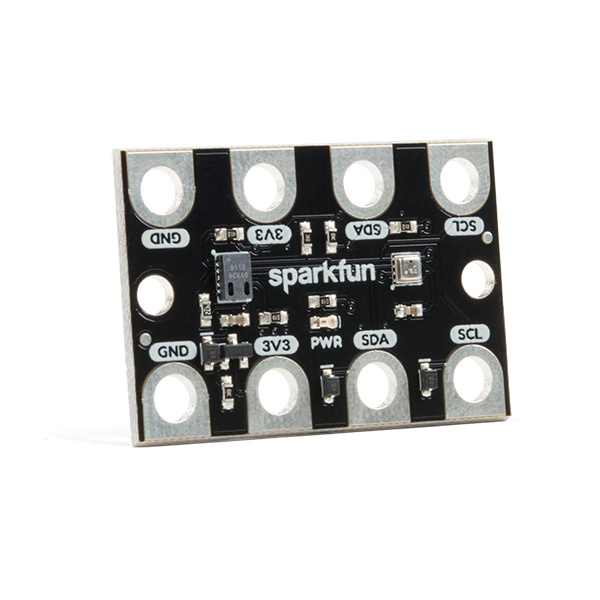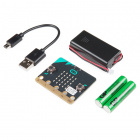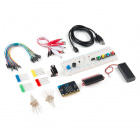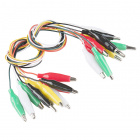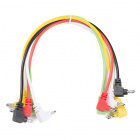SparkFun gator:environment Hookup Guide
Introduction
Do you have an experiment involving environmental changes?
The gator:environment is the solution for any environmental experimentation. It utilizes both the CCS811 and BME280 ICs for all of your climate and atmospheric quality readings. The CCS811 is an exceedingly popular sensor, providing readings for equivalent CO2 (or eCO2) in the parts per million (PPM) and equivalent total volatile organic compounds (or eTVOC) in the parts per billion (PPB). While, the BME280 provides a combined humidity, temperature, and barometric pressure readings. This tutorial will show you how to get started using this environmental sensor with the gator:bit (v2) in the micro:bit development environment.
Required Materials
To get started, you'll need a micro:bit to control everything. Each of the products below includes a micro:bit, but the kit and bundle also include some additional accessories that you may want as well.
micro:bit Board
DEV-14208micro:bit Go Bundle
DEV-14336SparkFun Inventor's Kit for micro:bit
KIT-15228To easily use the gator board ecosystem, a gator:bit (v2) will help breakout the necessary pins and you will also need alligator and/or banana cables to connect the gator:bit to the gator:environment.
Banana to Banana Cable - Right Angle
CAB-15368(*These banana cables have a special diameter on the attachment points designed specifically for use with the micro:bit ecosystem. They may or may not be compatible with the banana cables used on your test equipment.)
You may already have some of these materials, so feel free to modify your cart as necessary.
Suggested Reading
The gator:environment uses two separate sensors a BME280 and CCS811. The operation of the BME280 is fairly straight forward, but the CCS811 is a slightly more complicated metal oxide sensor. You may find the following concepts and tutorials useful with the gator:environment:
Logic Levels
I2C
micro:climate Kit Experiment Guide
CCS811/BME280 (Qwiic) Environmental Combo Breakout Hookup Guide
If you aren't familiar with the micro:bit, we recommend reading here for an overview.

We would also recommend taking a look at the following tutorials if you aren't familiar with them.
